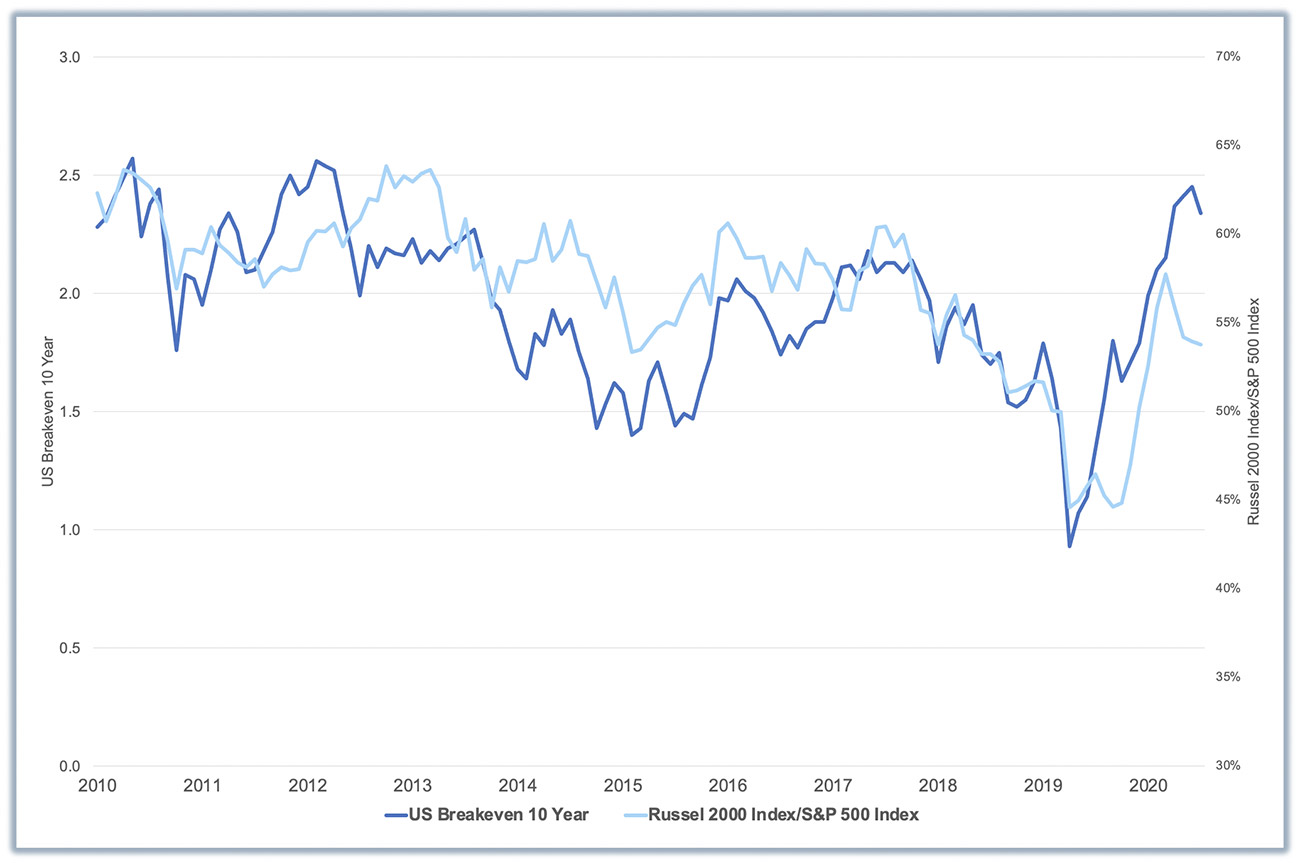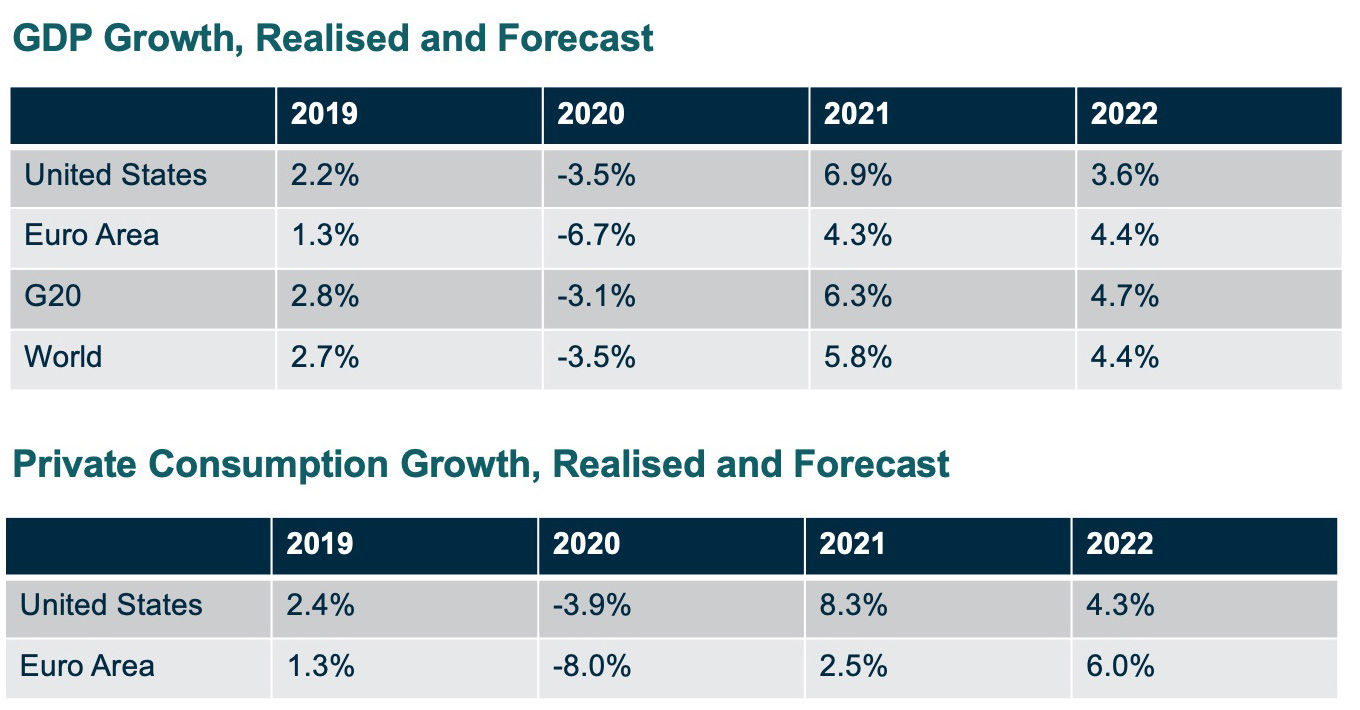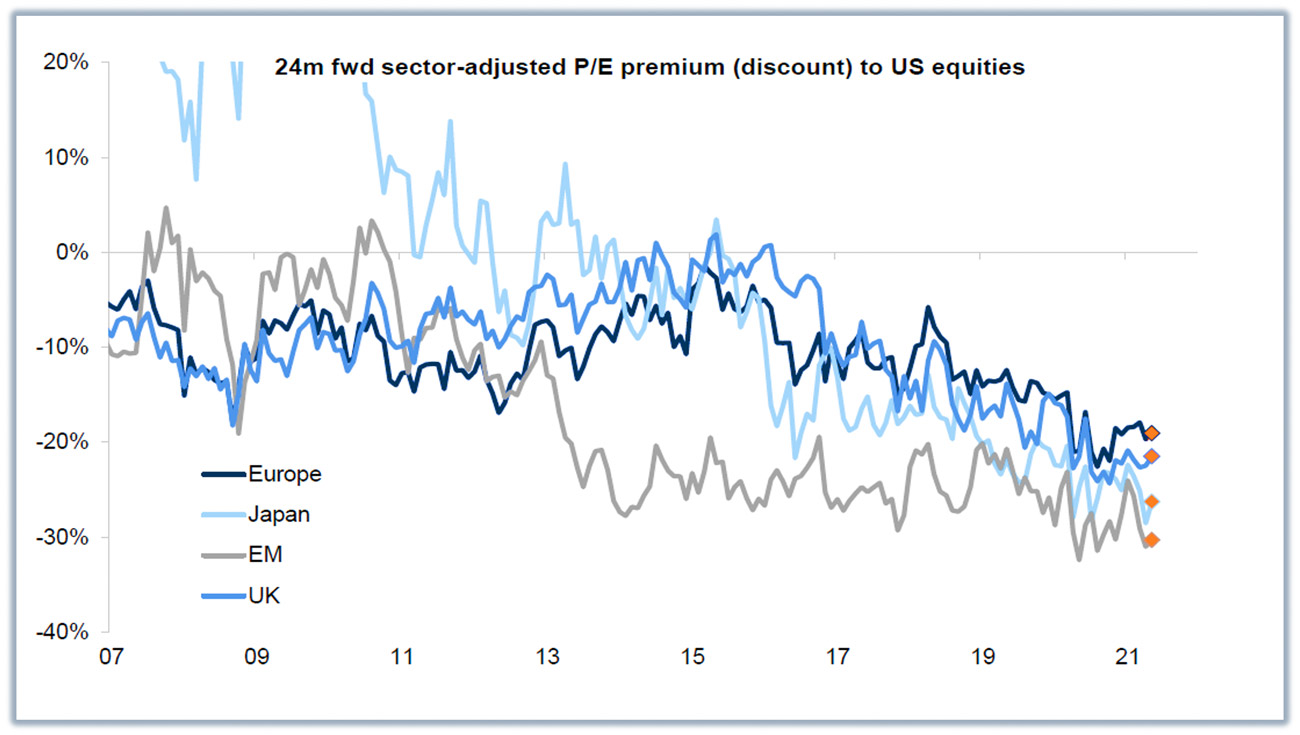Poised to deliver. Two emerging themes investors can’t ignore
Plus, the short-term impact of stylistic factors in an already attractive sector.
Over the last few years, larger, "growthier", US-based businesses have outperformed the broader market, and managers with styles favouring those characteristics have accordingly enjoyed a strong run.
For reasons set out below, we expect that we are now entering a more favourable investment environment for companies in different regions, and with different characteristics, than those that have previously enjoyed investment tailwinds.
THE CURRENT OPPORTUNITY
1. Inflation
History tells us that two investment characteristics tend to perform better during inflationary periods, value and small-caps.
Since 2010 small-cap stocks have outperformed large caps during periods of rising inflation expectations, figure 1 below shows the relative outperformance of small-cap stocks coincided with a sharp rise in inflation expectations, as measured by the difference in yields on nominal U.S. Treasury 10Y Notes and 10Y Treasury Inflation-Protected Securities (TIPS), from a March low of below 1% to a recent high of almost 2.5%

Figure 1 Source: Bloomberg
After many years of sluggish price growth, a number of factors have contributed to the emergence of inflation expectations.
- government stimulus,
- supply chain bottlenecks,
- elevated levels of household savings during lockdowns which give consumers additional purchasing power, as well as,
- global wage increases.
Prices paid by US consumers surged in June by the most since 2008 with core inflation (excluding food and energy) having the largest advance since 1991. In Britain, June inflation exceeded targets (and expectations), and the European Central Bank just revised their inflation target that has been in place since inception, from below 2% to 2% with a footnote that it will tolerate overshooting to make up for previous shortfalls.
2. Valuation differentials and the European recovery
European industrial companies, on average, did not enter the COVID-19 disruption at full capacity. 2019 GDP growth in the Euro Area was a paltry 1.3% and many businesses had reduced inventory in response to falling demand. Inventories then declined even further as supply chains were disrupted during the pandemic. It is now likely that the release of pent-up demand as vaccinations rates increase and societies emerge from lockdown, combined with monetary stimulus and other support measures, will create the ideal conditions for an industrial-led recovery. This is further supported by the OECD forecast of a significant rebound in private consumption through 2022. (see figure 2)

Figure 2 Source OECD Economic Outlook, Volume 2021 Issue 1 31 May 2021.
Regardless of investment style, valuations should always be considered. A sector–adjusted PE comparison removes the inevitable distortions which result from the dominance of different businesses in different regions. The valuation premium currently associated with US Equities is near its highest level since the GFC (See Figure 3).
This may make sense in the context of the GDP growth differentials experienced over the last few years, but Equities are forward-looking, and the valuation differential is harder to accept in the context of the forecasts.

Figure 3 Source – May 2021, Source FactSet, Goldman Sachs Global Investment Research
Small caps are poised to deliver
Investing in global small and mid-cap companies provides great opportunities for high-quality active managers to generate differentiated returns and long-term outperformance. This is primarily because the investment universe is not only massive and inefficient but also significantly under-researched. Over the shorter term, however, stylistic factors which influence the kind of companies and regions that a manager invests in can have a significant impact on returns.
With a global small-cap portfolio of approximately 50 companies, there are four key criteria that have always underpinned all of the holdings in our global small caps fund:
- Sustainable business models with pricing power and enduring competitive advantages
- Strong balance sheets with an ability to fund operations during periods of capital market disruption
- Disciplined and aligned management with strong corporate governance and a focus on compounding invested capital
- A compelling valuation providing downside protection
The application of these criteria should position a portfolio benefit from two of the major investment themes that we see starting to emerge.
Investments in businesses like Dino Polska, the Polish Grocery chain which has been held in the portfolio since July 2017 is well poised to take advantage of the evolving economic environment; or the 100-year-old ferry service between the UK and Ireland, the Irish Continental Group, which was more recently purchased to capture the increase in activity as these two economies emerge from lockdown.
If for the reasons described above, investments in high-quality reasonably priced companies with economic tailwinds are rewarded, our investors are likely to reap these rewards.
The Pengana Global Small Companies Fund is disproportionately invested in sectors that will benefit from an increase in interest rates, (see Figure 4), as well as more reasonably valued jurisdictions resulting in a significant overweight to Europe. It is also overweight industrial businesses and those sectors that will benefit most from a consumer-led recovery. Investors can learn more about the Fund at the Pengana website (VIEW LINK)
4 topics

